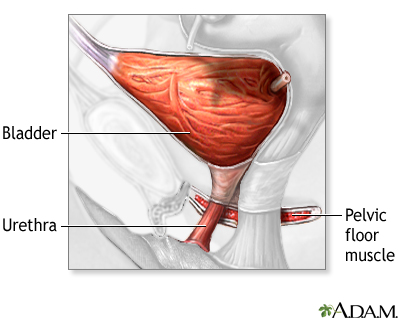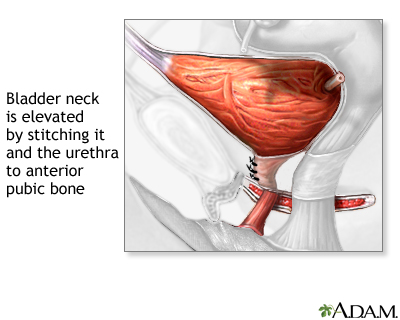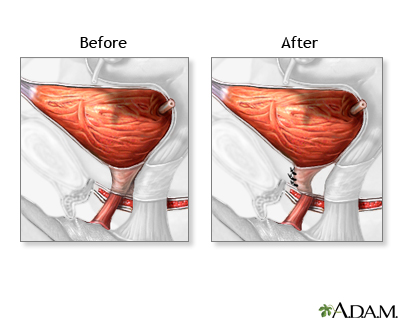Bladder and urethral repair
| Normal anatomy |
Stress incontinence is the involuntary leakage of urine when laughing, coughing, sneezing, or lifting, which can result from deformity or damage to the urethra and bladder from decreased muscle tone caused by multiple births, menopause, or other problems.
Bladder and urethral repair may be recommended to prevent urine leakage associated with stress incontinence.
|
| Procedure |
While the patient is deeply asleep and pain-free (general anesthesia), the surgeon elevates the bladder neck (pubococcygeal muscle) by stitching it and the urethra to the anterior (front) pubic bone.
After surgery, the patient will have a urinary catheter in place. The urine may initially appear bloody, but this should gradually resolve. The catheter may be removed several days after surgery if the patient is able to completely empty the bladder. Often a suprapubic catheter will need to remain in place for as long as 3 months, depending on the person's ability to empty the bladder completely.
|
| Aftercare |
The amount of time it takes to recover from surgery depends on the individual.
|

|
Review Date:
12/22/2011
Reviewed By:
Harvey Simon, MD, Editor-in-Chief, Associate Professor of Medicine, Harvard Medical School; Senior Physician, Massachusetts General Hospital. |
The information provided herein should not be used during any medical emergency or for the diagnosis or treatment of any medical condition. A licensed medical professional should be consulted for diagnosis and treatment of any and all medical conditions. Links to other sites are provided for information only -- they do not constitute endorsements of those other sites. © 1997-
A.D.A.M., Inc. Any duplication or distribution of the information contained herein is strictly prohibited.





